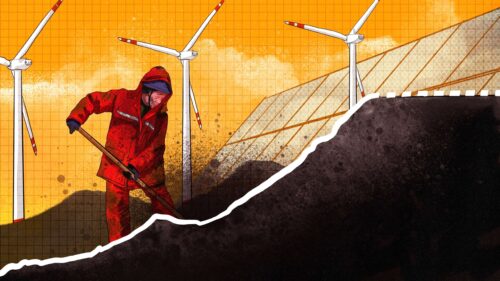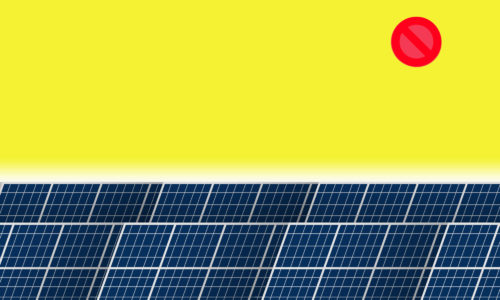Is the silicon used in solar panels about to get much cheaper?
The price of silicon, essential for China’s solar energy industry, has risen relentlessly for years. But supply is increasing, and this week, the government started a crackdown that might lower the price dramatically.

Yesterday, Tongwei Group 通威集团, the world’s leading supplier of silicon for solar panels, which are about 95% made of silicon, announced another eye-watering financial forecast:
- For the first three quarters of 2022, the company expects to report a net profit of up to 21.8 billion yuan ($3.03 billion), a year-on-year increase of 266.71%.
- On average, this would amount to profits of 80 million yuan ($11.15 million) every single day.
Tongwei’s supply of polysilicon, the purified form of silicon used in solar panels, is the foundation of China’s solar energy industry. According to Jiemian News, in 2021, Tongwei was China’s largest producer of silicon, accounting for 21.58% of the total production of 505,000 tons, followed by GCL Tech 协鑫科技 (20.69%), Daqo New Energy 大全能源 (17.15%), and Xinte Energy 新特能源 (15.49%).
In the first half of 2022 alone, China produced about 341,000 tons of polysilicon. Over this period, Tongwei signed five major polysilicon sales contracts worth a total of 254 billion yuan ($37.65 billion), which far outstrips the company’s entire reported revenue in 2021 of 63.49 billion yuan ($9.41 billion). In September, Tongwei signed an astronomical contract with Jinko Solar 晶科能源: From September 2022 to December 2026, Tongwei will supply Jinko Solar with 382,800 tons of polysilicon at a cost of over 100 billion yuan (almost $14 billion). This was the second contract of over 100 billion yuan Tongwei signed in September.
The reasons why Tongwei can make over $11 million a day are simple: An insatiable appetite for its product from China’s solar energy industry, and the persistently high price of silicon. The price of polysilicon has increased from 73 yuan ($10) per kilogram (2.2 lbs) at the beginning of 2020 to 303 yuan ($42.2) per kilogram in the third quarter of 2022, a cumulative increase of 315%, meaning that a ton of polysilicon now costs over 300,000 yuan ($41,820).
But the days of Tongwei’s fat profits are numbered.
China news, weekly.
Sign up for The China Project’s weekly newsletter, our free roundup of the most important China stories.
The coming crackdown
Over the last two months while Tongwei was raking in billions in profits, the company’s share price seemingly inexplicably went in the opposite direction: From a high of 63.25 yuan ($8.81) per share on August 22, it dropped by 25% in two months, wiping 71.1 billion yuan ($9.91 billion) off the company’s market capitalization. The reason might be that the market is expecting a correction in the price of silicon, and a crackdown.
Evidence of the latter emerged in August this year when the Ministry of Industry and Information Technology (MIIT) released a notice on “promoting the coordinated development of the photovoltaic industry and supply chain.” And then on October 9, MIIT, together with the State Administration for Market Regulation and the National Energy Administration, announced they had conducted interviews with the leading silicon companies to “strengthen self-discipline and self-examination, and supervision of standard regulations.” The respective heads of the three government departments also spoke out about the excessively high price of silicon, and identified other concerns in the industry such as price gouging and hoarding.
Will increased supply bring prices down naturally?
While aiming to promote cooperation between the upstream and downstream components of the silicon industry, and address price gouging and hoarding, the government is also promoting the coordination of existing silicon production capacity and the speeding up of the construction of new capacity, which is likely the best method to address high prices. Chinese production of silicon will likely soon start to exceed demand, and by 2025, there will be a vast excess of supply:
- According to the calculations of a Chinese news agency, in 2021, at least 13 silicon companies announced expansion plans for 2022–2024 with a total projected scale of 2.09 million tons.
- According to an industry insider, China’s silicon production capacity will reach 1.19 million tons in 2022, while actual production will reach 810,000 tons, accounting for 85.3% of global production.
- By 2025, China’s silicon production capacity will exceed 5 million tons, but global demand will only amount to 1.9 million tons, and reach 2.94 million tons by 2030.
The takeaway
Lower silicon prices will further accelerate the development of China’s solar energy industry, facilitating increases in production and providing Beijing with added means to attain its double carbon objectives. But this probably means the end of the good times for silicon companies like Tongwei.






